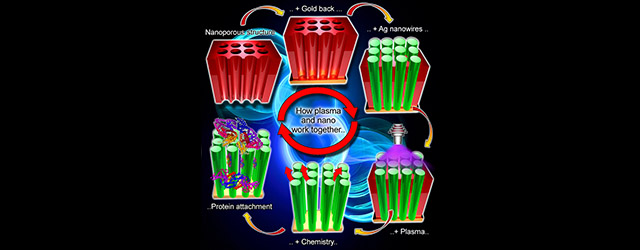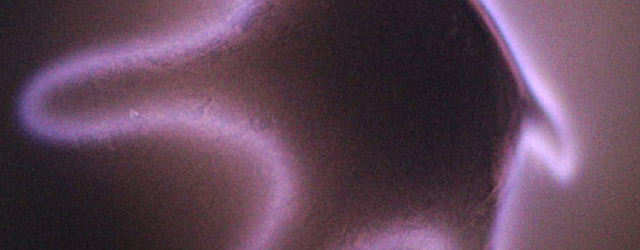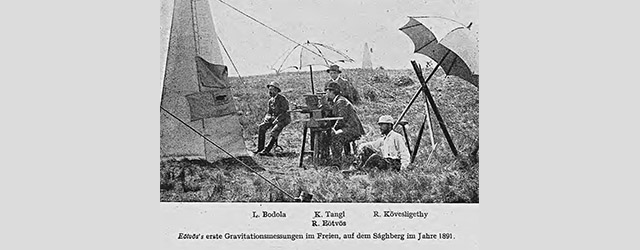Structure-function clustering in multiplex brain networks (Vol. 48 No. 1)

A key question in neuroscience is to explain how the brain’s rich repertoire arises within relatively static anatomical networks: understanding the relationships between this structure and the ‘functional’ connections (inferred from the synchronisation of activity between brain areas) it supports has the potential to address this. We employ a multiplex approach, in which anatomical and functional networks are analysed simultaneously. In particular, we consider a network describing the structural connectivity of the Macaque cortex, and a functional network derived from simulated neural activity. By comparison with single-layer approaches, our results provide the first demonstration that multiplex analyses of structure-function networks are better placed to capture emergent features of neural systems. Moreover, we propose a novel multiplex structure-function clustering measure that allows us to highlight the dependence of functional structure on the particular neural dynamical regime, and to characterise the emergent disparity between functional and anatomical networks. This divergence is fundamental to higher brain function - our new measure, that quantifies precisely this disparity, and our multiplex approach more generally, represents a new avenue towards understanding structure-function relationships at a more fundamental level.
J. J. Crofts, M. Forrester and R. D. O’Dea, Structure-function clustering in multiplex brain networks, EPL 116, 18003 (2016)
[Abstract]
New neuron dynamics model better fitted to the biological reality (Vol. 48 No. 1)

Scientists have now adopted a qualitative theoretical neuroscience model commensurate with actual measurements of neurons' dynamics
Neuroscientists are currently working diligently to understand the dynamics of thousands of coupled neurons. Understanding how they operate requires accurate models. The trouble is that each of the existing neuroscience models has its own shortcomings. The authors have, for the first time, developed an effective method for solving the equations of a well-known theoretical neuroscience dynamic model and make it more biologically relevant. These findings have just been published. They could not only help resolve problems in the neurosciences, but could also provide a deeper understanding of neuronal activity in the emerging sector of neurovascular dynamics, which describes the interplay between the brain's neurons and the blood flow.
E.B. Postnikov and O.V. Titkova, A correspondence between the models of Hodgkin-Huxley and FitzHugh-Nagumo revisited, Eur. Phys. J. Plus 131, 411 (2016
[Abstract]
Exploiting cavity optomechanics for phonon lasing (Vol. 48 No. 1)

Phonon lasing in a mechanical resonator is a regime in which its oscillations are self-sustained, monochromatic, coherent and of high-amplitude. The main limitations of conventional sources of coherent mechanical waves are that they are not self-sustained nor operate efficiently above a few tens of gigahertz. Phonon lasers overcome the former by definition, while the latter is one of the challenges being tackled to make a real technological impact. Phonon lasers based on optomechanical devices may provide a way out, where advances of nanofabrication techniques help push-up the frequency of the vibration modes that can be tailored and driven by radiation pressure forces, while integration into a high-quality optical cavity allows a dramatic increase of power efficiencies.
This work reviews several mechanisms and techniques that can drive a mechanical mode into the lasing regime by exploiting the radiation pressure force in optomechanical cavities. The authors pay special attention to circular microresonators and optomechanical photonic crystal cavities. The former were the pioneer optomechanical setups demonstrating phonon lasing action while the latter can be chip-integrated enabling straightforward connection to phononic waveguides or membranes for out-coupling the phonon lasing signal.
D. Navarro-Urrios, J. Gomis-Bresco, F. Alzina, N. E. Capuj, P. D. García, M. F. Colombano, E. Chavez-Angel and C. M. Sotomayor-Torres, Self-sustained coherent phonon generation in optomechanical cavities, J. Opt. 18, 094006 (2016)
[Abstract]
Pushing the boundaries of magnet design (Vol. 48 No. 1)

New method to make permanent magnets more stable over time
For physicists, loss of magnetisation in permanent magnets can be a real concern. In response, the Japanese company Sumitomo created the strongest available magnet—one offering ten times more magnetic energy than previous versions—in 1983. These magnets are a combination of materials including rare-earth metal and so-called transition metals, and are accordingly referred to as RE-TM-B magnets. The authors have now been pushing the boundaries of magnet design, as published in a recent study. They have developed methods to counter the spontaneous loss of magnetisation, based on their understanding of the underlying physical phenomenon. They have now developed a simple additive-based method for ensuring the stability of permanent magnets over time, with no loss to their main magnetic characteristics.
R. B. Morgunov, E. I. Kunitsyna, V. V. Kucheryaev, V. P. Piskorskii, O. G. Ospennikova and E. N. Kablov, Giant effect of Sm atoms on time stability of (NdDy)(FeCo)B magnet, Eur. Phys. J. Plus, 131, 344 (2016)
[Abstract]
Plasma and Nano put novel biomaterials into life (Vol. 48 No. 1)

Low-temperature plasma, i.e. ionized gas produced by electric discharges in gas or liquid, is a powerful tool for fabricating novel biocompatible nanomaterials.
Typically, complex nanomaterials are produced using chemistry-based techniques. They are cheap and efficient, and could be further utilized to fabricate nanomaterials vitally needed for novel devices. However, emerging applications require a new generation of nanomaterials to boost their characteristics and occupy devoted application niches. The low-temperature plasma could play a pivotal role in the nanosynthesis of immense complexity. This review paper reveals advantages of approaches based on the plasma environment to fabricate nanoscaled biomaterials exhibiting very high biological activity, biological inertness, and other features of the biomaterials capable of making them highly attractive. Plasma-assisted fabrication of gold and silicon nanoparticles for bio-applications; carbon nanoparticles for cancer therapy; carbon nanotube-based platforms for enzyme production and bacteria growth control; and other applications of low-temperature plasmas in the production of biologically-active materials were discussed. The effect of plasmas have led to better results, as compared with the conventional neutral-gas based methods.
I. Levchenko, M. Keidar, U. Cvelbar, D. Mariotti, A. Mai-Prochnow, J. Fang and K. Ostrikov, Novel biomaterials: plasma-enabled nanostructures and functions. Topical Review, J. Phys. D: Appl. Phys. 49, 273001 (2016).
[Abstract]
Silicon plasma wave receiver for terahertz wireless communication (Vol. 48 No. 1)

This paper presents the design, manufacturing and characterization of an integrated circuit (IC) that uses the plasma oscillations phenomena in silicon nanotransistors (Si-CMOS) for the detection of a 300 GHz-carrier-frequency wireless signal. We present the strategies for a Si-CMOS-based, wideband, integrated circuit receiver comprising: (i) a physics based, specific plasma-wave-transistor design, allowing impedance matching to the antenna and the amplifier, (ii) a patch antenna engineered through a stacked resonator approach and (iii) a broadband amplifier that uses bandwidth enhancement circuit techniques.
The receiver rectifies a 300 GHz carrier frequency, with a flat and very wideband response, up to10 GHz. This is, to the best of our knowledge, the first demonstration of a low cost 130 nm Si-CMOS technology, plasma wave transistors based, fast and wideband integrated circuit receiver operating at 300 GHz atmospheric window. The results pave the way towards future large scale, and cost effective silicon-technology based, high data bit rate, terahertz wireless communication receivers.
S. Nahar, M. Shafee, S. Blin, A. Pénarier, P. Nouvel, D. Coquillat, A. M. E. Safwa, W. Knap and M. M. Hella, Wide modulation bandwidth terahertz detection in 130 nm CMOS technology, Eur. Phys. J. Appl. Phys. 76, 20101 (2016)
[Abstract]
New precision coating method for industrial granular material (Vol. 48 No. 1)

Deposition of a thin film catalyst of a predicted thickness on the surface of novel hydrogen storage microbeads helps release hydrogen.
As anyone who eats their cereal with milk in the morning knows: coating large volumes of granular material homogeneously is no mean feat. In a recent paper published by the authors, they have developed a new method, based on physical vapour deposition, to upscale the quantity of coating without affecting the quality and homogeneity of the film. In this study, they also developed a model capable of predicting the film thickness. This represents a major step forward for industrial materials, as previous approaches relied on optical measurement after the coating had been deposited. Because this coating system is capable of implementing a plasma close to the granular substrate, it opens the door to new surface treatment and modification possibilities. Applications are expected for the many granular materials used in industry, including, for example, a novel hydrogen-storage system, which stores hydrogen in hollow glass spheres. Hydrogen stored in microbeads can be released by applying heat to the spheres. The new method helps meet the challenge of applying heat to the beads, thanks to a chemical reaction triggered by a catalyst, which is applied to the sphere's surface.
A. Eder, G.H.S. Schmid, H. Mahr and C. Eisenmenger-Sittner, Aspects of thin film deposition on granulates by physical vapor deposition, Eur. Phys. J. D 70, 247 (2016)
[Abstract]
Breaking up: a convoluted drama at nuclear scale, too (Vol. 48 No. 1)

Regardless of the scenario, breaking up is dramatic. Take for example the case of carbon (12C) splitting into three nuclei of helium. Until now, due to the poor quality of data and limited detection capabilities, physicists did not know whether the helium fragments were the object of a direct breakup in multiple fragments up front or were formed in a sequence of successive fragmentations. The question has been puzzling physicists for some time. Now, the authors have used a state-of-the-art detector capable of measuring, for the first time, the precise disintegration of the 12C into three helium nuclei. Their findings, released in a study published recently, reveal a sequence of fragmentations, relevant to developing a specific kind of fusion reactions and in astrophysics. Their findings could have applications in devising an alternative to neutron-producing fusion reactions, a process called aneutronic fusion. In addition, they could help to improve our theoretical understanding of an extremely important reaction in astrophysics: the time-reversed process involving the fusion of three helium nuclei into 12C.
H.K. Laursen, H.O.U. Fynbo, O.S. Kirsebom, K.S. Madsbøl and K. Riisager, Complete kinematical study of the 3α breakup of the 16.11 MeV State in 12C, Eur. Phys. J. A, 52, 271 (2016)
[Abstract]
The 1950s: the decade in which gravity physics became experimental (Vol. 48 No. 1)

History shows experiments to be just as key as theory in gravity physics In the 1950s and earlier, the gravity theory of Einstein's general relativity was largely a theoretical science. In a new paper published recently, the author shares a historical account of how the experimental study of gravity evolved.
This review examines the broad range of new approaches initiated in the late 1950s, following through to the transition of experimental gravity physics to become a normal and accepted part of physical science in the late 1960s. Highlighting the importance of advances in technology in changing the lines of investigation in the field, it also emphasises the need for physical theories to be empirically tested, because experience shows that this can yield surprising results. In this context, the review examines the role of scientists such as the US physicist Robert Dicke in changing the former perspective. At that time, Dicke made the mid-career decision to lead a research group dedicated to the experimental study of gravity, following new research directions inspired by old arguments associated with Ernst Mach and Paul Dirac.
P.J.E. Peebles, Robert Dicke and the naissance of experimental gravity physics, 1957-1967, Eur. Phys. J. H, (2016)
[Abstract]
Nanoparticles hitchhiking their way along strands of hair (Vol. 48 No. 1)

Massaging hair can help more quickly deliver nanoparticle-based treatment to the roots
In shampoo ads, hair always looks like a shiny, smooth surface. But for physicists peering into microscopes, the hair surface looks much more rugged, as it is made of saw-tooth, ratchet-like scales. In a new theoretical study published recently, the authors have demonstrated that massaging hair can help to apply drug treatment—encapsulated in nanoparticles trapped in the channels formed around individual hairs—to the hair roots. This is because the oscillatory movement of the massaging directs the way these particles are transported. This phenomenon was previously discovered in experiments on pork skin samples, which were conducted by Jürgen Lademann, dermatologist at the Charité clinic in Berlin, Germany, and his team. It is also relevant at the microscopic scale, in the transport on microtubules taking place in two directions between the cells within our bodies. By constrast, these findings could also help find ways of preventing harmful nanoparticles from being transported along hairs into the wrong places.
M. Radtke and R. R. Netz, Ratchet effect for two-dimensional nanoparticle motion in a corrugated oscillating channel, Eur. Phys. J. E 39, 116 (2016)
[Abstract]
Unstable radioactive nuclei’s dual traits study in open refereed paper (Vol. 48 No. 1)

HIE-ISOLDE acceleration of radioactive beams to peer into the dual state of matter unique to nuclei.
Radioactive nuclides, found within an atom's core, all share a common feature: they have too many or too few neutrons to be stable. In a new review published recently, the authors explain how overcoming technical difficulties in accelerating such radioactive nuclei beams can help push back the boundaries of nuclear physics research. This fascinating topic is the first EPJ A paper to be subjected to an open referee process, whereby the referee's comments are included. The authors outline how the new CERN project HIE-ISOLDE will reach the energy levels needed to make two nuclei overcome the electric repulsion between them—referred to as the Coulomb barrier. This means that it will be possible to design experimental tools to explore both single-particle and collective degrees of radioactive nuclei freedom. This will improve our understanding of the unique duality in the degrees of freedom, which no other state of matter exhibits. Ultimately, physicists aim to have a “dial-a-radioactive-nuclei beam” of the same quality as stable nuclei beams.
M.J.G. Borge and K. Riisager, HIE-ISOLDE, the project and the physics opportunities, Eur. Phys. J. A 52, 334 (2016)
[Abstract]
Emergent gain materials for active photonics (Vol. 48 No. 1)

Nowadays semiconductor nanostructures developed by colloidal methods have emerged as an alternative to the classical III-V semiconductors and rare earth technologies to provide active functionalities in photonic devices. Their outstanding optical properties include high absorption cross section, high quantum yield of emission at room temperature, or the capability of tuning the band-gap with the size/base material. As a consequence, these materials have been successfully applied in several fields, such as photodetection, amplification, generation of light or sensing. For these purposes their solution process nature provides a cheap fabrication, and an easy incorporation on a broad range of substrates and photonic structures. This review summarizes the great effort undertaken by the scientific community to construct active photonic devices based on semiconductors fabricated by chemical methods. The work compares the performances demonstrated by semiconductor nanocrystals (colloidal quantum dots, quantum rods and quantum wells) with those provided by organometal halide perovskites, and describes their appropriate integration into photonic architectures (waveguides and cavities) to achieve stimulated emission.
I. Suárez Alvarez, Active photonic devices based on colloidal semiconductor nanocrystals and organometallic halide perovskites, Eur. Phys. J. Appl. Phys. 75, 30001 (2016)
[Abstract]
Supersonic phenomena, the key to extremely low heat loss nano-electronics (Vol. 48 No. 1)

Supersonic solitary waves in nano-electronics crystals show potentials for electric charge or matter transport and energy storage with extremely low heat dissipation
Freak waves, as well as other less striking localised excitations, occur in nature at every scale. The current theory and models of such waves can be applied to physics and, among others, to oceanography, nonlinear optics and lasers, acoustics, plasmas, cosmological relativity and neuro-dynamics. However, they could also play a significant role at the quantum scale in nano-electronics. In a recent study, the authors performed computer simulations to compare two types of localised excitations in nano-electronics. Their findings, published in a recent study, confirm that such localised excitations are natural candidates for energy storage and transport. These, in turn, could lead to applications such as transistors with extremely low heat dissipation not using silicon.
M. G. Velarde, A. P. Chetverikov, W. Ebeling, S. V. Dmitriev and V. D. Lakhno, From solitons to discrete breathers, Eur. Phys. J. B 89, 233 (2016)
[Abstract]







